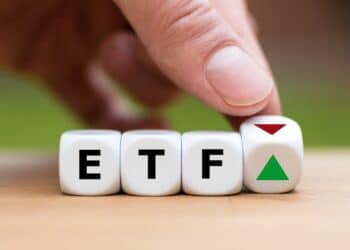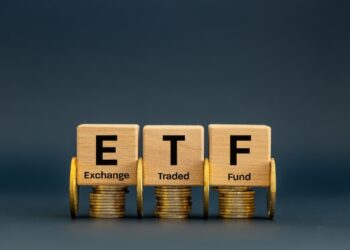With the growing importance of environmental, social and governance (ESG), many investors will be aware of the need to consider those factors when making their equity allocations.
However, they may have less knowledge of how their bonds can contribute as many large-scale sustainable projects will be funded through debt issued by bond issuers.
The easiest way for investors to access this in their portfolios is via holding sustainable or green bonds which aim to have positive environmental benefits and have grown to be a trillion-dollar market.
According to HSBC’s global research report ‘Green Bond Insights’ the overall green bond market exceeded US$1 trillion ($1.35 trillion).
Green bond supply (year to date) was US$196.8 billion – just over double the US$93.7 billion for the same period last year.
That is a lot of money at stake – and it’s crucial for building the framework for a green future.
Navindu Katugampola, Morgan Stanley Investment Management global head of sustainability, said fixed income was the natural home for sustainable investing.
“Asset managers are mainly transacting in the primary market rather than secondary, which gives us regular, direct interface with issuers seeking capital, versus equity investors, and the opportunity to engage with issuers to encourage meaningful positive sustainability outcomes,” Katugampola said.
“Many of the sustainability challenges, environmental and social, will require capex [capital expenditure] to drive change, and that capex will primarily be debt funded.
“Fixed income is the home of the labelled sustainable bond market, with total issuance now well over $1.5 trillion and growing, which gives a high degree of transparency on issuers’ sustainability objectives.”
Brishni Mukhopadhyay, Western Asset ESG product specialist, said fixed income investors played a key role as creditors in assessing material ESG risks and opportunities that may impede creditworthiness of issuers.
“While ESG integration has often been associated with equity investing, integration of these facets should be a central tenet for bond investors too,” Mukhopadhyay said.
“Material issues such as climate risk and environmental management, diversity and development of talent, human rights and supply chain management, product safety and security, transparency in reporting and the quality of corporate management, to name a few, are key issues that should form part of a fixed income investor’s assessment across all sectors.”
Calvert Research Management’s Brian Ellis, fixed income portfolio manager, and Andrew Goodale, institutional portfolio manager, said fixed income offered a unique benefit that both ESG and impact-oriented investors would find attractive.
“[That is] the ability to invest in specific direct impact opportunities that finance specific projects,” they said.
“This has been a driving force behind the recent rapid growth of the green, social, and sustainable bond markets.
“All of these benefits help to complete an investor’s portfolio without solely relying on the equity portion.”
GREENWASHING RISKS
Like with equities, fixed income still faced the risk of possible greenwashing, where ESG products failed to deliver promises made by its marketing.
Mukhopadhyay said academic research and practitioner experience indicated issuers with superior ESG practices had a lower cost of debt, favourable future bond spreads and tend to experience lower drawdowns during periods of market stress.
This meant there was a financial cost to not using a fixed income provider that was serious about underlying ESG credentials of its holdings.
“Conversely, issuers that are deemed to be lower in ESG quality tend to have higher risk affecting their future ability to meet debt obligations and must compensate investors with a higher premium,” Mukhopadhyay said.
“Poor quality ESG issuers are also more likely to be adversely affected by developments such as legal sanctions, the introduction of new regulations or shifts in consumer sentiment.
“It is therefore imperative that asset managers understand, measure and allocate strategically to mitigate these risks while seeking to benefit from opportunities arising from ESG integration.”
Although the Australian Securities and Investments Commission (ASIC) had started a review into greenwashing to review the labelling of super and managed funds, it was still important for advisers to do their own due diligence to make sure the choices being made aligned to their clients’ values.
Investors should ask their asset manager or investment adviser to disclose how they integrated ESG in their fixed income fund or portfolio and this should also be disclosed in reporting, said Erik Keller, Robeco client portfolio manager fixed income.
“In our Sustainable Development Goals (SDG) credit strategies we screen out companies that have a negative impact on one of the 17 UN SDGs and can report on how the portfolio is positioned towards the 17 UN SDGs,” Keller said.
Stuart Dear, Schroders head of fixed income, said it was important to do all the background work when researching ESG bonds.
“You don’t just buy a bond because it has a green or sustainable label,” Dear said.
One of these labels – sustainability-linked bonds (SLBs) – were a polarising option when it came to fixed income ESG options.
On one hand it offered a way to set performance targets aligned to sustainability strategies, rather than being tied to financing green projects, which still allowed issuers to offer proactive ESG targets. However, under this structure investors had no idea where the bonds proceeds would go and the interest rate payments would be affected if it did not meet the sustainability objectives.
The performance target was also established for the issuer, so it was more likely suited to the needs of the project, which may not be in line with broader sustainable targets like the Paris Agreement.
That was not to say SLBs were greenwashed, but it was important for advisers to consider the broader implications of what was being invested.
Dear said there was merit to SLBs and the objectives attached made a difference when it came to corporate ESG development, for example.
“The coupons that are paid are actually linked to whether the company can achieve its stated targets around emissions,” Dear said. “Those types of bonds that are linked to an outcome make better sense than ones that just have a label over the top.”
However, Nelson Ribeirinho, Mirova fixed income portfolio manager, said he felt less comfortable with SLBs as it was harder to tell where the assets were financed.
“As opposed to green bonds where you know exactly what green assets are financed, with SLBs it’s a bit more opaque,” Ribeirinho said.
“I don’t want to be judgemental, but when you see [oil and gas producers] coming to the market with SLBs, I cannot help myself but to think it’s not the best way to address the ESG challenges within the fixed income space.”
INFLATION IMPACT
Inflation had been in the forefront of investment managers’ minds this year as rising inflation was expected to hurt equity markets, but ESG fixed income managers were less worried about being affected by it.
Mike Della Vedova, fixed income division global high yield portfolio manager at T. Rowe Price, said he did not expect inflation to cause issues in sustainable fixed income.
“From a technical perspective, we would expect below-investment grade (sustainable or traditional) to perform well in a higher inflation environment as investor demand for income-generating asset classes increases,” Della Vedova said.
Reznick said inflation pressure was coming from tightness in the value chain and a spike in commodity resources, especially fossil fuels.
“Those that have reduced their carbon intensity through increased energy efficiency in the production process will be relatively more indemnified from a rise in energy prices than their less energy efficient peers because they are simply consuming less energy to make the same amount of goods and services,” Reznick said.
“As such, lowering one’s carbon intensity in energy-intensive industries can be a competitive advantage.
“Also, sourcing energy from non-fossil fuel sources could be a hedge against fossil fuel energy sources.”
However, Ellis and Goodale said any jump in inflation would be a drag, however, on the performance of those fixed income investments with a longer duration.
“The duration in many traditional intermediate-term fixed income indices like the US Aggregate has continued to extend, so this would argue for seeking out ESG fixed income strategies targeting shorter durations or even a strategy that permits broad flexibility including negative duration,” they said.
RATING ESG FUNDS
Evergreen Consultants rated ESG factors over the whole spectrum, from ESG integration (the lightest end) all the way to impact investing (the most intensive end) with the Evergreen Responsible Investment Grading (ERIG) Index.
Looking at the extreme ends of the spectrum, when it came to ESG integration (Table 1), the PIMCO Global ESG Bond scored the highest with a rating of 9.05 (out of 10), and six of the top 10 highest rated fixed interest funds were from PIMCO.
For impact investing (Table 2), Artesian Green and Sustainable Bond scored a perfect 10, while the Corporate Bond fund scored 9.5, and PIMCO’s Global ESG Bond scored 9.
PIMCO Global ESG bond was the runner up in Money Management’s 2021 Fund Manager of the Year Global Fixed Income award, in May 2021.
Aaditya Thakur, PIMCO portfolio manager, said the firm believed investors should not have to sacrifice performance for their sustainable investment objectives.
“The PIMCO ESG Global Bond fund investment process is fully integrated with our broader investment process, enabling us to target risk-adjusted returns which correspond with our non-ESG-based investment strategies, while delivering positive sustainable impact,” Thakur said.
“The fund is therefore unique in Australia: it offers investors a dedicated ESG solution in fixed interest without necessarily compromising on the key tenets that they have come to expect from a core bond holding in their portfolio.
“The fund’s philosophy is classified by its focus on the three ‘E’s: exclude, evaluate and engage.
“Unlike many other ESG-orientated bond funds in Australia that stop at simply excluding certain investments (‘exclude’), it goes further and seeks to optimise the portfolio towards issuers with the best ESG scores (‘evaluate’) as well as actively seeks to improve ESG practices of issuers it invests in (‘engage’).”





